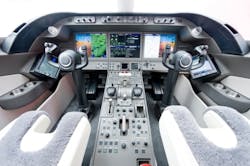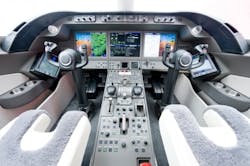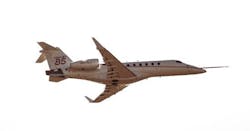Bombardier Learjet 85 achieves first flight with Rockwell Collins Pro Line Fusion avionics
CEDAR RAPIDS, Iowa, 10 April 2014. Bombardier’s new business jet, the Learjet 85 aircraft, made its first flight in Wichita, Kan., with the help of Rockwell Collins’ Pro Line Fusion avionics and horizontal stabilizer trim system (HSTS).
“Pro Line Fusion’s wide breadth of mission capabilities and the ingenuity of our HSTS are a perfect match for the next-generation performance and technology this clean-sheet aircraft brings” says Craig Olson, vice president and general manager, Business and Regional Systems for Rockwell Collins.
Pro Line Fusion for the Learjet 85 features 15.1-inch LCD displays in a three-display configuration with a list of capabilities, including:
· Synthetic vision for enhanced situational awareness of terrain and obstacles
· A patented airport dome symbol on the primary flight display that provides pilots with an intuitive view of their destination
· Integrated Flight Information System (IFIS) that integrates geo-referenced approach charts and graphical weather
· Dual Flight Management System (FMS) for efficient operation in modernized airspace worldwide
· Localizer Performance with Vertical guidance (LPV) for providing unprecedented access to over 2000 runways without an ILS approach
· Intuitive electronic checklists that eliminate paper documents from the flight deck
New for Pro Line Fusion with the Learjet 85 first flight is the Electronic Circuit Breaker display and control capability that simplifies flight deck operations for pilots. Made possible by Pro Line Fusion’s open systems architecture, Bombardier Aerospace, Astronics, and Rockwell Collins have integrated an on-screen replacement for the traditional mechanical circuit-breaker panel. This saves wire weight and reduces factory production time without the need for federated displays or controls on the flight deck.
Rockwell Collins’ HSTS controls the pitch of the horizontal stabilizer in order to reduce drag and trim the aircraft for optimal efficient flight. Its dual-load-path design provides two independent attachment points between the horizontal stabilizer and the airframe for added safety.
Optional features for the Learjet 85 include dual IFIS, Link 2000+ capability, and Rockwell Collins’ MultiScan Weather Radar that delivers comprehensive weather analysis and threat detection capability to pilots.


